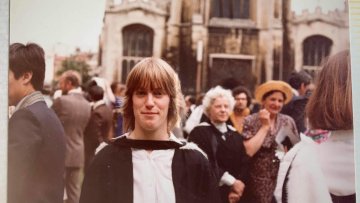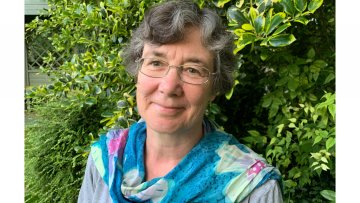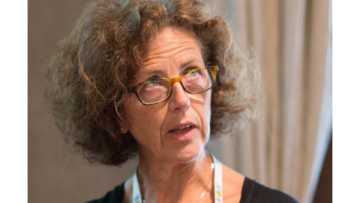"Historically, mathematics has been a largely male-dominated field, with women in mathematical academia consistently being underrepresented. A report in 2013 by the London Mathematical Society shows some progress has been made in increasing the participation of women in recent times, with the proportion of women pursuing an undergraduate degree in mathematics in the UK standing at around 42%.
14:00
PageRank on directed preferential attachment graph
Abstract
We study a family of evolving directed random graphs that includes the directed preferential model and the directed uniform attachment model. The directed preferential model is of particular interest since it is known to produce scale-free graphs with regularly varying in-degree distribution. We start by describing the local weak limits for our family of random graphs in terms of randomly stopped continuous-time branching processes, and then use these limits to establish the asymptotic behavior of the corresponding PageRank distribution. We show that the limiting PageRank distribution decays as a power-law in both models, which is surprising for the uniform attachment model where the in-degree distribution has exponential tails. And even for the preferential attachment model, where the power-law hypothesis suggests that PageRank should follow a power-law, our result shows that the two tail indexes are different, with the PageRank distribution having a heavier tail than the in-degree distribution.
14:00
Generalized birthday problem for October 12
Part of the Oxford Discrete Maths and Probability Seminar, held via Zoom. Please see the seminar website for details. Joint with the Random Matrix Theory Seminar.
Abstract
Suppose there are $n$ students in a class. But assume that not everybody is friends with everyone else, and there is a graph which determines the friendship structure. What is the chance that there are two friends in this class, both with birthdays on October 12? More generally, given a simple labelled graph $G_n$ on $n$ vertices, color each vertex with one of $c=c_n$ colors chosen uniformly at random, independent from other vertices. We study the question: what is the number of monochromatic edges of color 1?
As it turns out, the limiting distribution has three parts, the first and second of which are quadratic and linear functions of a homogeneous Poisson point process, and the third component is an independent Poisson. In fact, we show that any distribution limit must belong to the closure of this class of random variables. As an application, we characterize exactly when the limiting distribution is a Poisson random variable.
This talk is based on joint work with Bhaswar Bhattacharya and Somabha Mukherjee.
12:45
Relations between 6d and 4d SCFTs -- VIRTUAL!
Abstract
We will review how one can find families of 4d N=1 SCFTs starting from known 6d (1,0) SCFTs.
Then we will discuss a relation between 6d RG-flows and 4d RG-flows, where the 4d RG-flow relates 4d N=1 models constructed from compactification of 6d (1,0) SCFTs related by the 6d RG-flow. We will show how we can utilize such a relation to find many "Lagrangians" for strongly coupled 4d models. Relating 6d SCFTs to 4d models as mentioned above will result in geometric reasoning behind some 4d phenomena such as dualities and symmetry enhancement.
Such a program generates a large database of known 4d N=1 SCFTs with many interrelations one can use in future efforts to construct 4d N=1 SCFTs from string theory directly.
12:45
Nonperturbative Mellin Amplitudes
Abstract
We discuss the Mellin amplitude formalism for Conformal Field Theories
(CFT's). We state the main properties of nonperturbative CFT Mellin
amplitudes: analyticity, unitarity, Polyakov conditions and polynomial
boundedness at infinity. We use Mellin space dispersion relations to
derive a family of sum rules for CFT's. These sum rules suppress the
contribution of double twist operators. We apply the Mellin sum rules
to: the epsilon-expansion and holographic CFT's.
12:45
Cluster Structures in N=4 Yang-Mills Amplitudes
Abstract
Scattering amplitudes in N=4 super-Yang-Mills theory are known to be functions of cluster variables of Gr(4,n) and certain algebraic functions of cluster variables. In this talk we give an overview of the known cluster algebraic structure of both tree amplitudes and the symbol of loop amplitudes. We suggest an algorithm for computing symbol alphabets by solving matrix equations of the form C.Z = 0 associated with plabic graphs. These matrix equations associate functions on Gr(m,n) to parameterizations of certain cells of Gr_+ (k,n) indexed by plabic graphs. We are able to reproduce all known algebraic functions of cluster variables appearing in known symbol alphabets. We further show that it is possible to obtain all rational symbol letters (in fact all cluster variables) by solving C.Z = 0 if one allows C to be an arbitrary cluster parameterization of the top cell of Gr_+ (n-4,n). Finally we discuss a property of the symbol called cluster adjacency.




